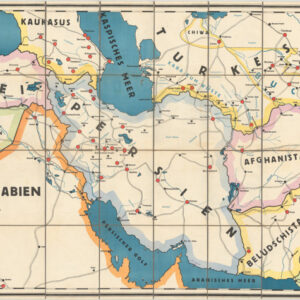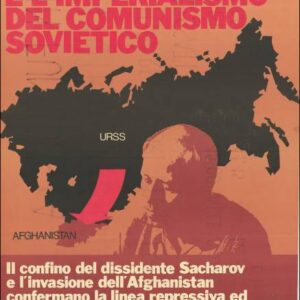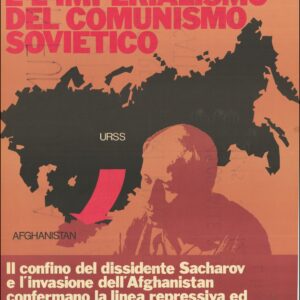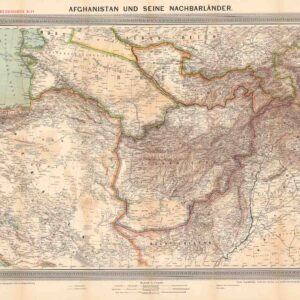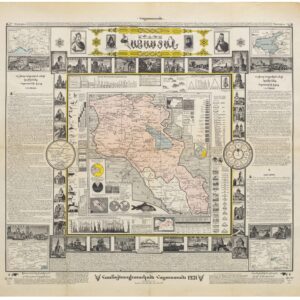Russian Orientalist Nikolai Khanykov’s map of Greater Azerbaijan.
[Great Game] Map of Aderbeijan compiled principally from personal observations and surveys made in the years 1851-55 by N. Khanikof…
$2,400
In stock
Description
A Russian map of Greater Azerbaijan, produced by one of the great Russian orientalists and contributing to the regional struggle for power known as ‘The Great Game.’
Russian orientalist Nikolai Khanykov compiled this striking topographical map following his exploratory travels to the region of Greater Azerbaijan in the 1850s. The scope of the map, in modern terms, constitutes the unitary republic of Azerbaijan, as well as three provinces in northwestern Iran (Ardabil, East Azerbaijan, and West Azerbaijan).
The map is highly detailed, with a dense place names and relief in excellent hachure. Famous Persian cities like Ardabil and Tabriz are labeled in thick black lettering and stand out as large urban areas. Similarly, the careful rendering of topography means that the region’s significant summits constitute visual focal points on the map. Outside the area of focus, there is less detail. This includes the sparse stretch of the Caspian coast shown. For example, the map does not include the current Azerbaijani capital of Baku.
Despite the density of labeling on the map, additional information is found along the edges and inside bordering territories. This includes lists of villages and a glossary of common Persian words used in the place names. The scales in the lower right corner show distances in Geographical and English miles and Russian verst and Persian farsakh.
Context is Everything
During the late 19th century, the Russian Empire’s geopolitical interests in Central Asia and the Middle East were intricately woven into a complex web of international power struggles, territorial expansion, and strategic rivalries known as the Great Game. This period was marked by intense competition between the Russian Empire and the British Empire for influence and control over vast swathes of territory stretching from the Caucasus to the Indian subcontinent.
In Central Asia, the Russian Empire sought to expand its imperial borders and consolidate control over the region’s valuable resources, including cotton, silk, and strategic trade routes. Military conquests, diplomatic maneuvers, and economic interests drove Russian expansion into Central Asia. The conquest of Central Asian khanates such as Bukhara (1868) and Khiva (1873) allowed Russia to establish a firm foothold in the region and extend its influence along the legendary Silk Road.
The Russian Empire’s advance into Central Asia was resisted by local rulers and tribal leaders, sparking numerous conflicts and uprisings. The conquest of Tashkent in 1865 and the subsequent annexation of Samarkand and Bukhara brought the Russian Empire closer to its ultimate goal of reaching the borders of British India. However, British concerns over Russian expansionism led to the Anglo-Russian Agreement of 1873, which established spheres of influence in Central Asia and sought to maintain a delicate balance of power in the region.
Meanwhile, the Russian Empire pursued strategic interests in the Middle East to gain access to warm-water ports and expand its influence in the Eastern Mediterranean. The Crimean War (1853-1856) highlighted Russia’s desire to challenge Ottoman control over the Black Sea straits and gain access to the Mediterranean. Despite facing setbacks during the war, Russia continued to exert influence in the region through diplomatic maneuvering and alliances with local powers.
The Russo-Turkish War of 1877-1878 resulted in the Treaty of San Stefano, which granted Russia significant territorial gains in the Balkans and heightened tensions with Britain, which feared Russian dominance in the Eastern Mediterranean. The subsequent Congress of Berlin in 1878 saw the revision of the Treaty of San Stefano and the imposition of new boundaries in the Balkans, limiting Russian expansion in the region.
Overall, the late 19th century witnessed a complex interplay of geopolitical interests and rivalries as the Russian Empire and the British Empire vied for supremacy in Central Asia and the Middle East. Scholarship was no small part of this competition. The Great Game shaped the geopolitical landscape of Eurasia and laid the groundwork for future conflicts and alliances in the region.
Census
Following its compilation by Nikolai Khanykov, the map was engraved by J. Sulzer under the direction of H. Kiepert, printed by F. Barth, and published by D. Reimer in Berlin in 1862.
Neatline’s example is from 1862, but an edition from 1861 also exists. The 1862 edition is scarce in institutional collections, with OCLC listing only four occurrences at the libraries of Princeton, Harvard, the University of Chicago, and Staats- und Universitätsbibliothek Göttingen (no. 69933937).
Cartographer(s):
Heinrich Kiepert (July 31, 1818 – April 21, 1899) was a German geographer. Kiepert taught geography at the University of Humboldt-Berlin starting in 1854. He taught at the university until his death in Berlin on April 21, 1899. His son, cartographer Richard Kiepert, continued publishing his works.
Nikolai KhanykovNikolai Khanykov (b. 24 October 1819, d. 15 November 1878) was a prominent figure in 19th-century Russian Oriental studies, a field of inquiry deeply linked to the Russian Empire’s geo-political interests in Central Asia. Despite spending his later years in France and publishing most of his scholarly works in French, Khanykov remained influential in European academic circles while maintaining close ties with the Russian government. Engaging in diplomatic missions across Central Asia, the Caucasus, Persia, and Afghanistan, Khanykov showcased his expertise as a negotiator and adviser to Russian tsars and ministers on Oriental affairs.
A fusion of scholarly pursuits and diplomatic endeavors marked Khanykov’s career. His notable achievements included his groundbreaking monograph on the Bukhara Khanate, which provided comprehensive insights into the region’s culture, politics, and geography. Despite facing political scrutiny and accusations of espionage, Khanykov contributed significantly to Oriental studies. Though sometimes ending in diplomatic failure, his expeditions and missions yielded rich scholarly outcomes and earned him respect among European and Russian scholars. The detailed maps he compiled on his surveys were essential to his enduring legacy.
Retreating to France in his later years, Khanykov continued his scholarly pursuits while maintaining ties with the Russian government. Despite his critical views of Russia, he remained financially supported by Russian ministries and continued to advise on foreign policy matters. Khanykov’s legacy extends beyond academia, encompassing his diplomatic engagements and strategic alliances that shaped Russian interests in the Orient.
Condition Description
Excellent. Folding map on original linen with minor discoloration in the bottom left panel.
References
